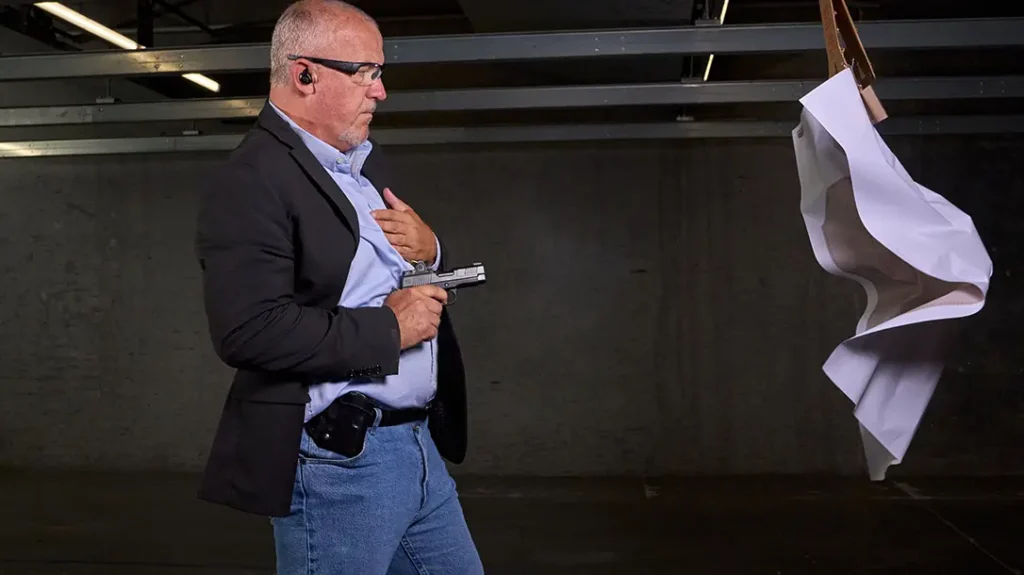Getting a set of iron sights on your rifle is only half the battle. Sure, they may look good, but now you’ll need to zero them. Zeroing, or aligning sights to a single point on a target, is a simple process. Read on and get enlightened.
First, you need to choose a measure of distance that you want your zero to be in. The choice between yards and meters is usually user’s preference, although certain irons are marked for meters or yards. If they are, go with whichever measurement your sights are set for. (Note that most sights are not marked, and if yours aren’t, then it’s your choice.)
RELATED STORY: 24 Backup Iron Sights For Your Rifle
Advertisement — Continue Reading Below
Some like to zero at 25 meters and others at 50 yards. That’s another discussion in itself. For this example, we chose a 50-yard zero.
1.) Be sure you and your rifle are on a stable surface such as a benchrest or sandbags. Any movement, no matter how slight, will throw off your shots.
2.) Place a target 25 yards downrange and fire a three-round group.
Advertisement — Continue Reading Below
3.) Based on where your shots hit, adjust the elevation of the front sight post up or down. A tool may be required to do this.
4.) Adjust the rear sight windage knob to adjust its windage (left/right).
5.) Shoot three-round groups and adjust the sights until the desired point-of-aim, point-of-impact is achieved.
Advertisement — Continue Reading Below
6.) Once you have a zero at 25 yards, back the target back to 50 yards and repeat. At this point, you should only need to adjust the elevation.
RELATED STORY: 11 Next-Gen Sights to Maximize Your Gun’s Performance
Hint 1: If you’re having a hard time dialing in your zero, try only adjusting the elevation or windage between three-round groups.
Advertisement — Continue Reading Below
Hint 2: If you’re not even hitting paper, try pulling the target closer, to 10 yards, and get a zero at that distance. After you do, back the target out to 25 and then to 50 yards.
This article was originally published in the Winter 2016 issue of BALLISTIC™. Subscription is available in print and digital editions here.
Advertisement — Continue Reading Below
























